Indore
| Indore | |
|---|---|
| Metropolis | |
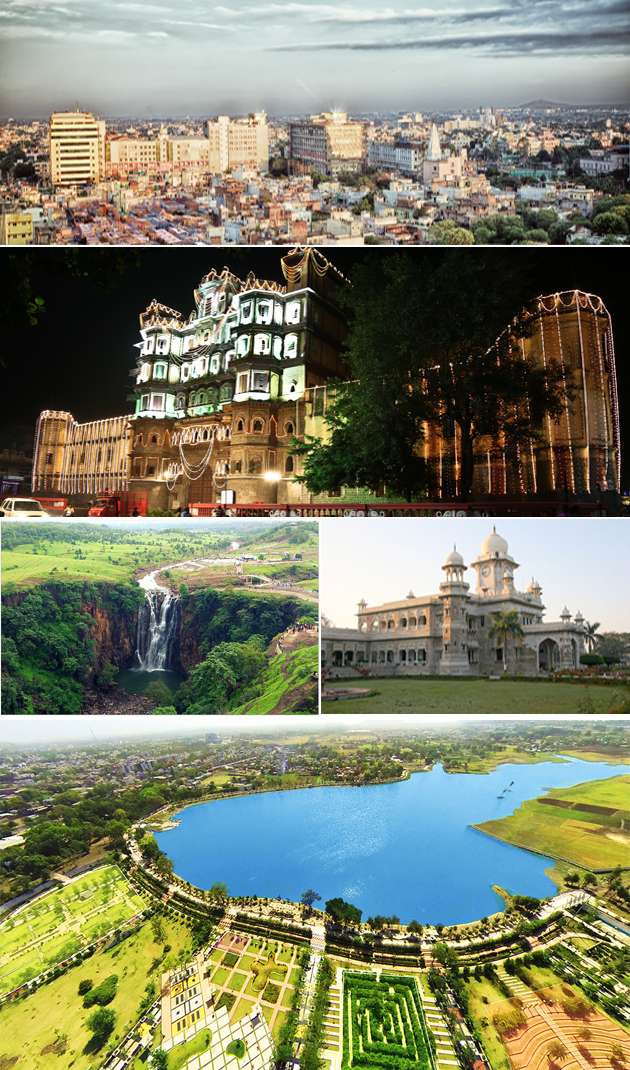 Clockwise from top: skyline of Mangal City area (Vijay Nagar), Rajwada Palace, Daly College, Atal Bihari Vajpayee Regional Park aerial view, Patalpani Waterfalls | |
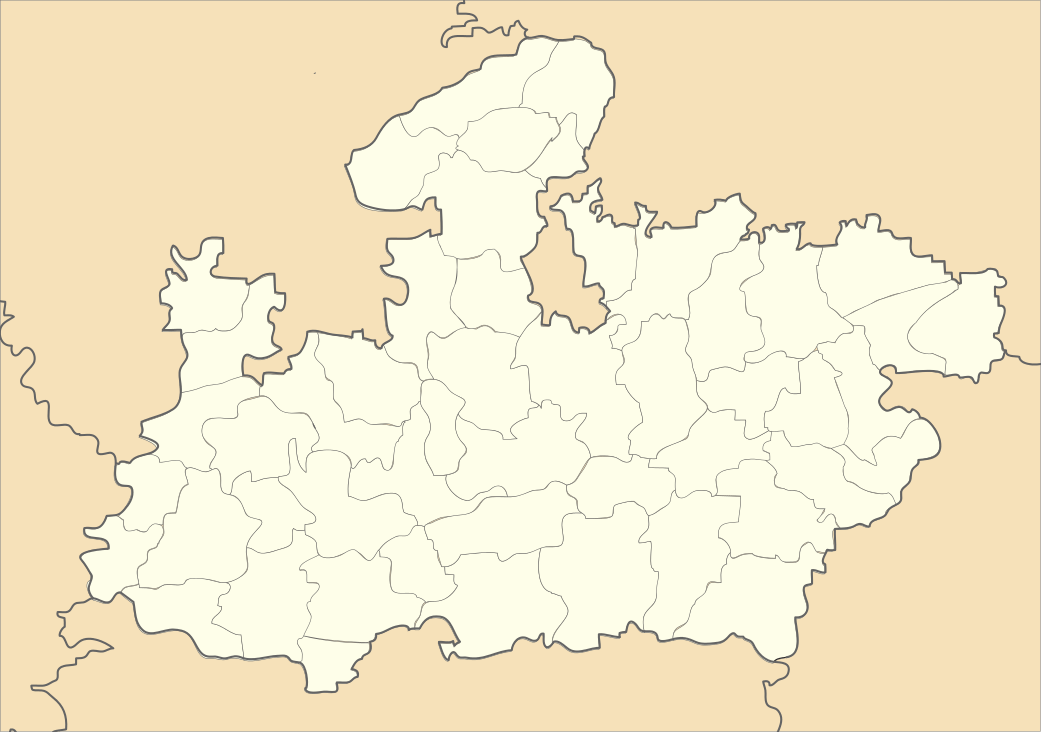 Indore Location of Indore in Madhya Pradesh | |
| Coordinates: 22°43′0″N 75°50′50″E / 22.71667°N 75.84722°ECoordinates: 22°43′0″N 75°50′50″E / 22.71667°N 75.84722°E | |
| Country |
|
| State | Madhya Pradesh |
| Region | Malwa |
| District | Indore District |
| Ward | 85 wards[1] |
| Government | |
| • Type | Mayor–Council |
| • Body | Indore Municipal Corporation |
| • Mayor | Malini Laxmansingh Gaur (BJP) |
| • District Collector | Nishant Warwade(IAS)[2] |
| • Municipal Commissioner | Ashish Singh (IAS)[3] |
| • Member of Parliament | Sumitra Mahajan (now Speaker in Lok Sabha (2014–)) |
| Area[4] | |
| • Metropolis | 530.0 km2 (204.6 sq mi) |
| • Metro | 2,380 km2 (920 sq mi) |
| Area rank | 11 |
| Elevation | 550 m (1,800 ft) |
| Population (2011) | |
| • Metropolis | 1,994,397 |
| • Rank | 14th |
| • Density | 3,800/km2 (9,700/sq mi) |
| • Metro[5][6] | 2,170,295 |
| • Metro rank | 15th |
| Demonym(s) | Indori, Indorian |
| Languages | |
| • Official | Hindi and English |
| • Regional | Hindi and Malvi dialect of Hindi |
| Time zone | IST |
| PIN | 4520XX |
| Telephone code | 0731 |
| Vehicle registration | MP-09 |
| Sex ratio |
Female 927 Male 1000[1] |
| Literacy Rate | 80.63%[7] |
| HDI | High[8] |
| Climate | Cwa / Aw (Köppen) |
| Precipitation | 945 mm (37.2 in) |
| Avg. annual temperature | 24.0 °C (75.2 °F) |
| Avg. summer temperature | 31 °C (88 °F) |
| Avg. winter temperature | 17 °C (63 °F) |
| Website |
www |
Indore /ɪnˈdɔːr/ (![]()
Indore traces its roots to its 16th century founding as a trading hub between the Deccan and Delhi. The city and its surroundings came under Hindu Maratha Empire on 18 May 1724 after Maratha Peshwa Baji Rao I assumed the full control of Malwa. During the days of the British Raj, Indore State was a 19 Gun Salute (21 locally) princely state (a rare high rank) ruled by the Maratha Holkar dynasty, until they acceded to the Union of India.[12] Indore served as the capital of the Madhya Bharat from 1950 until 1956.
Indore's financial district, based in central Indore, functions as the financial capital of Madhya Pradesh and is home to the Madhya Pradesh Stock Exchange, India's third-oldest stock exchange.
Indore has been selected as one of the 100 Indian cities to be developed as a smart city under the Smart Cities Mission.[13] It also qualified the first round of Smart Cities Mission and was selected as one of the first twenty cities to be developed as Smart Cities.[14] Indore has been elected as the cleanest city of India two years in a row as per the Swachh Survekshan 2017 and the Swachh Survekshan 2018, respectively.[15]
Etymology
The city is named after its Indreshwar Temple, where lord Indra is the presiding deity.[16]
History
Maratha Raj (Holkar Era)
By 1720, the headquarters of the local pargana were transferred from Kampel to Indore, due to the increasing commercial activity in the city. On 18 May 1724, the Nizam accepted the rights of the Maratha Peshwa Baji Rao I to collect chauth (taxes) from the area. In 1733, the Peshwa assumed the full control of Malwa, and appointed his commander Malhar Rao Holkar as the Subhedar (Governor) of the province.[17] Nandlal Chaudhary accepted the suzerainty of the Marathas.
On 29 July 1732, Bajirao Peshwa-I granted Holkar State by merging 28 and one-half parganas to Malhar Rao Holkar, the founding ruler of Holkar dynasty. His daughter-in-law Ahilyabai Holkar moved the state's capital to Maheshwar in 1767, but Indore remained an important commercial and military centre.
British Occupation (Indore/Holkar State)
In 1818, the Holkars were defeated by the British during the Third Anglo-Maratha War, in the Battle of Mahidpur by virtue of which the capital was again moved from Maheshwar to Indore. A residency with British resident was established at Indore, but Holkars continued to rule Indore State as a princely state mainly due to efforts of their Dewan Tatya Jog. During that time, Indore was established the headquarters of British Central Agency. Ujjain was originally the commercial centre of Malwa. But the British administrators such as John Malcolm decided to promote Indore as an alternative to Ujjain, because the merchants of Ujjain had supported anti-British elements.[18]
In 1906 electric supply was started in the city, fire brigade was established in 1909 and in 1918, first master-plan of city was made by noted architect and town planner, Patrick Geddes. During the period of Maharaja Tukoji Rao Holkar II (1852–86) efforts were made for the planned development and industrial development of Indore. With the introduction of Railways in 1875, the business in Indore flourished during the reigns of Maharaja Shivaji Rao Holkar, Maharaja Tukoji Rao Holkar III and Maharaja Yeshwant Rao Holkar.
 Tookajee Rao Holkar II, Indore, from a drawing by Mr. W. Carpenter, Jun.," from the Illustrated London News, 1857
Tookajee Rao Holkar II, Indore, from a drawing by Mr. W. Carpenter, Jun.," from the Illustrated London News, 1857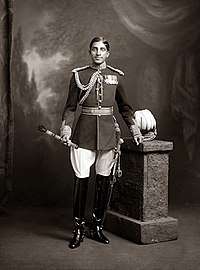

Post-independence
After India's independence in 1947, Holkar State, along with a number of neighbouring princely states, acceded to Indian Union. In 1948, with the formation of Madhya Bharat, Indore became the summer capital of the state. On 1 November 1956, when Madhya Bharat was merged into Madhya Pradesh, the state capital was shifted to Bhopal. Indore, a city today of nearly 2.1 million residents, has transformed from a traditional commercial urban centre into a modern dynamic commercial capital of the state.
Demographics
Indore is the most populous city in the Madhya Pradesh. Indore is also the largest metropolitan city in Central India. According to the 2011 census of India, the population of Indore city (the area under the municipal corporation and outgrowths) is 1,994,397.[11] The population of the Indore metropolis (urban agglomeration that includes neighbour areas) is 2,170,295.[5] In 2011, the city had a population density of 25,170 people per square mile (9,718/km²), rendering it the most densely populated of all municipalities with over 100,000 population in the Madhya Pradesh. As per 2011 census, the city of Indore has an average literacy rate of 87.38%, higher than the national average of 74%. Male literacy was 91.84%, and female literacy was 82.55%[20] In Indore, 12.72% of the population is under 6 years of age (as per census 2011). The average annual growth rate of population is around 2.85% as per the statistics of census 2001. Religion-wise, according to the 2011 census reports, Hindus constitute the majority, 80.18% of Indore's total population, while Muslims are 14.09%, Jains 3.25%, and others 2.48%.[21]
Hindi is the official language of the Indore city, and is spoken by majority of the population (97.6%). The populace of Indore converse mainly in Hindi. A number of Hindi dialects such as Bundeli, Malawi and Chhattisgarhi are also spoken. Other languages with a substantial number of speakers include Marathi, Sindhi, Bhojpuri and Gujarati.[22]
According to 2012 figures, around 6,000 Pakistani Hindu migrants live in the city (out of a total 10,000 in the state).[23] Majority of them are Sindhi People.
Government and politics
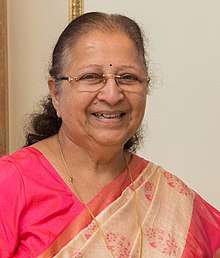
The administration of Indore is formed of two tiers—a citywide, and a local tier.[24] Most of the regions surrounding the city are administered by the Indore Development Authority (IDA). IDA works as an apex body for planning and co-ordination of development activities in the Indore Metropolitan Region (IMR) comprising Indore and its agglomeration covering an area of 398.72 km2. Primarily, IDA develops new residential areas. During the early stage of development of such areas, the IDA is responsible for developing basic infrastructure. Once a sizable number of plots are sold, the area is formally transferred to the IMC, which is then responsible for the maintenance of the infrastructure in the area.[25]
The IDA consists of two appointed components; the collector of the district, who has executive powers, and the IDA Board which includes a chairman appointed by Government of Madhya Pradesh, Municipal Commissioner of Indore and five members form Town and Country Planning Department, Forest Department, Public Health Engineering, Public Works Department and MP Electricity Board[26] who scrutinize the collector's decisions and can accept or reject his budget proposals each year. The role of IDA is to implement the master plan for Indore prepared by the Town and Country Office, Bhopal.[27] The headquarters of the IDA is at Race Course Road, Indore.[28]
Indore City has been a metropolitan municipality with a mayor-council form of government. Indore Municipal Corporation (IMC) was established in 1956 under the Madhya Pradesh Nagar Palika Nigam Adhiniyam. The IMC is responsible for public education, correctional institutions, libraries, public safety, recreational facilities, sanitation, water supply, local planning and welfare services. The mayor and councilors are elected to five-year terms. The Indore Municipal Corporation is a unicameral body consisting of 69 Council members whose districts are divided into 12 zones and these zones have been further divided into 69 wards defined by geographic population boundaries.[29]
The Indore Police, a division of the Madhya Pradesh Police, under direct control of Department of Home Affairs, Government of Madhya Pradesh is the law enforcement agency in Indore. Indore district is divided into 39 police stations and seven police outposts.[30]
Indore is also a seat for one of the two permanent benches of Madhya Pradesh High Court with Gwalior, the city, its agglomerates and other 12 districts of western Madhya Pradesh falls under the jurisdiction of Indore High Court.
Economy
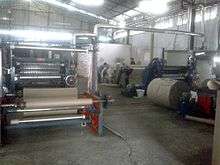
Indore is a commercial centre for goods and services. Indore had GDP of $14 billion as of 2011.[31] The city also hosts a Global Investors' Summit which attract investors from several countries.
Major industrial areas surrounding the city include Pithampur (phase I, II, III - alone host 1500 large, medium and small industrial set-ups[32]), Indore Special Economic Zone (around 3000 acres[33]), Sanwer Industrial belt (1000 acres[34]), LaxmiBai Nagar IA, Rau IA, Bhagirathpura IA, Kali Billod IA, Ranmal Billod IA, Shivaji nagar Bhindikho IA, Hatod IA,[34] IT Parks - Crystal IT Park (5.5 lakh square feet), IT Park Pardeshipura (1 lakh square feet[35]), Electronic Complex, individual SEZ such as TCS SEZ, Infosys SEZ, Impetus SEZ, Diamond Park, Gems and Jewellery Park, Food Park, Apparel Park, Namkeen Cluster and Pharma Cluster.
Pithampur is known as the Detroit of Madhya Pradesh.[36][37]
Madhya Pradesh Stock Exchange (MPSE) originally set up in 1919 is the only exchange in Central India and the third oldest stock exchange in India is located in Indore. Now the National Stock Exchange (NSE) has established an Investor Service Center in the city.[38]
Infosys is setting up a new development centre at Indore at an investment of Rs 100 crore in phase one at super corridor.[39] Infosys demanded an area of 130 acres to open its new facility in Indore which will employ about 13,000 people. TCS has started construction of its campus at Indore, Collabera has also announced plans to open campuses in Indore. The government of MP has also done the land allotment.[40] Besides these, there are several small and medium size software development firms in Indore. Webgility, a San Francisco-based ecommerce company that has had a presence in Indore since 2007, opened a 16,000-foot campus at NRK Business Park in 2017.
Culture

The Yeshwant Club (named after Late the Maharaja Yeshwant Rao II Holkar of Indore) and Sayaji Club/Hotel (named after Late the Maharaja Sayaji Rao III Gaekwad of Baroda) are big sponsors for art & music and invite talents from across world. The major art centres in Indore are the Devlalikar kala Vithika, Ravindra Natya Grah (RNG), Mai Mangeshkar Sabha Grah, Anand Mohan Mathur Sabhagrah, DAVV auditorium, and Brilliant Convention Centre.[41]
The city has a good rock/metal music culture which is growing. Nicotine, one of the city's earliest and most renowned bands, is widely known for being the pioneer of metal music in Central India.[42][43]
Climate
Indore lies on a borderline between a humid subtropical climate (Köppen climate classification Cwa) and a tropical savanna climate (Aw). Because of its high elevation and inland location even during the hottest months the nights are relatively cool, which is known as Shab-e-Malwa.[44] Three distinct seasons are observed: summer, monsoon and winter. the coldest temperature was 1.1 °C (34.0 °F) in January 1936.[45]
Indore gets moderate rainfall of 700 to 800 millimetres (28 to 31 in) during July–September due to the southwest monsoon.
| Climate data for Indore (1971–1990) | |||||||||||||
|---|---|---|---|---|---|---|---|---|---|---|---|---|---|
| Month | Jan | Feb | Mar | Apr | May | Jun | Jul | Aug | Sep | Oct | Nov | Dec | Year |
| Record high °C (°F) | 33.9 (93) |
37.9 (100.2) |
41.1 (106) |
44.6 (112.3) |
46.0 (114.8) |
45.8 (114.4) |
39.9 (103.8) |
35.8 (96.4) |
37.4 (99.3) |
37.8 (100) |
37.1 (98.8) |
32.9 (91.2) |
46.0 (114.8) |
| Average high °C (°F) | 26.5 (79.7) |
28.8 (83.8) |
34.3 (93.7) |
38.7 (101.7) |
40.4 (104.7) |
36.2 (97.2) |
30.3 (86.5) |
28.2 (82.8) |
30.9 (87.6) |
32.4 (90.3) |
29.7 (85.5) |
26.9 (80.4) |
31.9 (89.4) |
| Daily mean °C (°F) | 18.2 (64.8) |
20.2 (68.4) |
25.3 (77.5) |
30.0 (86) |
32.4 (90.3) |
30.1 (86.2) |
26.5 (79.7) |
25.1 (77.2) |
26.0 (78.8) |
25.3 (77.5) |
21.8 (71.2) |
18.8 (65.8) |
25.0 (77) |
| Average low °C (°F) | 9.8 (49.6) |
11.4 (52.5) |
16.2 (61.2) |
21.2 (70.2) |
24.4 (75.9) |
24.1 (75.4) |
22.6 (72.7) |
21.9 (71.4) |
21.1 (70) |
18.1 (64.6) |
12.2 (54) |
10.6 (51.1) |
17.9 (64.2) |
| Record low °C (°F) | 1.1 (34) |
2.8 (37) |
5.0 (41) |
7.8 (46) |
16.7 (62.1) |
18.9 (66) |
18.9 (66) |
18.6 (65.5) |
9.0 (48.2) |
6.2 (43.2) |
5.6 (42.1) |
1.1 (34) |
1.1 (34) |
| Average precipitation mm (inches) | 4 (0.16) |
3 (0.12) |
1 (0.04) |
3 (0.12) |
11 (0.43) |
136 (5.35) |
279 (10.98) |
360 (14.17) |
185 (7.28) |
52 (2.05) |
21 (0.83) |
7 (0.28) |
1,062 (41.81) |
| Average precipitation days (≥ 1.0 mm) | 0.8 | 0.8 | 0.3 | 0.3 | 1.8 | 8.6 | 15.9 | 18.3 | 8.6 | 3.1 | 1.4 | 0.6 | 60.5 |
| Average relative humidity (%) | 46 | 36 | 25 | 23 | 33 | 58 | 79 | 85 | 73 | 50 | 44 | 48 | 50 |
| Mean monthly sunshine hours | 289.0 | 275.6 | 287.6 | 305.9 | 326.9 | 208.6 | 104.1 | 79.9 | 180.6 | 270.8 | 274.0 | 281.3 | 2,884.3 |
| Source #1: NOAA[46] | |||||||||||||
| Source #2: India Meteorological Department (record high and low up to 2010)[47] | |||||||||||||
Transport
Air

Indore is served by Devi Ahilyabai Holkar Airport, about 8 km from the city. It is the busiest airport in the states of Madhya Pradesh and Chhattisgarh with 2,269,971 passengers and 10851 tons cargo for April 2017- March 2018. Devi Ahilyabai Holkar Airport, Indore has been adjudged as the best airport in under 2 million annual passenger footfall category in Asia Pacific region in the Airports Council International (ACI)'s airport service quality (ASQ) rankings for the year 2017.
Rail
.jpg)

The Indore Junction is an A-1 grade railway station with a revenue of more than Rs. 50 crore(500 million). The station comes under Ratlam Division of the Western Railways.
Electrification of the Indore–Dewas–Ujjain was completed in June 2012. Ratlam–Indore broad gauge conversion was completed in September 2014.[48] Indore–Mhow section was upgraded to broad gauge in 2016 and electrified in 2017.[49]
Aside from the main Indore Junction, the city of Indore has eight other railway stations:
| Station name | Station code | Railway zone | Total platforms |
|---|---|---|---|
| Lakshmibai Nagar | LMNR | Western Railway | 3 |
| Saify Nagar | SFNR | Western Railway | 1 |
| Lokmanya Nagar | LMNR | Western Railway | 1 |
| Rajendra Nagar | RJNR | Western Railway | 2 |
| Manglia Gaon | MGG | Western Railway | 3 |
| Rau | RAU | Western Railway | 2 |
| Mhow | MHOW | Western Railway | 3 |
| Patalpani | MGG | Western Railway | 3 |
Road
Indore is connected to other parts of India through National and State highways.
The National Highways passing through the city are:
- National Highway 52 (NH 52) contains parts of the erstwhile NH3 (AB Rd) and it originates at Sangrur, Punjab and runs through Jaipur, Rajasthan, Indore, Dhule and terminates at Ankola in Karnataka.
- National Highway 47 starts from Bamanbore, Gujarat and reaches Indore via Ahmedabad and further connects Betul to terminate at Nagpur.
The highways which have ceased to exist because of renumbering[50] are:
- National Highway 3 also known as the Agra-Bombay Road or AB Road, was an important highway connecting Agra to Mumbai via Indore & Dhule.
- National Highway 59 & its branch NH 59A. NH 59 originated at Ahmedabad and passed through Godhra, Indore, Raipur, Brahmapur, Odisha and terminated at Gopalpur-on-Sea while NH 59A connected Indore & Betul.
The state highways passing through the city are:
- MP State Highway 27 runs from Jhalawar in Rajasthan, through Ujjain, Indore, Burhanpur in Madhya Pradesh and terminates at Malkapur, Buldhana in Maharashtra.
- MP State Highway 31 (Neemuch – Ratlam – Dhar)
Public transport
Indore's City Bus transport system runs through 277 km of road with a daily ridership of 55,000.[51] Atal Indore City Transport Services Ltd, a PPP scheme operates buses and radio taxis in the city. The buses designated as City Bus operate on 27 Routes[52]and 8 MIDI Bus routes,[53] with 426 bus stops.[54] The buses are color-coded into three colors: Blue, Magenta and Orange according to their route.[55]
Indore BRTS (iBUS) – Indore BRTS is a bus rapid transit system with air-conditioned (AC) and non-AC buses. Some of these buses are equipped with services like GPS and IVR which are used to track the position of the bus with information displayed on LED displays installed at the bus stops.
Indore Magic (Auto Rickshaw) – Indore Auto Rickshaw is a magic service for small distance travel. Daily approx 5 lakh people travel within the city.
Indore Metro is a proposed light metro system.
Education
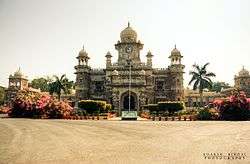
Indian Institute of Technology Indore is one of the most prestigious institutions in the country. Started in 2009, IIT Indore has its 500-acre campus in Simrol (28 km from Indore City). IIT Indore has several disciplines including Civil Engineering, Computer Science Engineering, Electrical Engineering, Mechanical Engineering, Metallurgy and Material Science.
IIT Indore ranked 15 under the engineering category in the National Institute Ranking Framework. IIT Indore's central library emphasizes the use of Online Information Resources. The library provides its users access to nearly 3800 electronic journals as well as access to databases such as ACM Digital Library, IEEE XPlore Digital Library, Science Direct, MathSciNet, JSTOR, SciFinder, Taylor and Francis, WILEY, and Springer. The library also provides air-conditioned and Wi-Fi enabled reading halls.
SGSITS Indore is the oldest and the most prominent technical institute of central India located in the heart of Indore.
Devi Ahilya Vishwavidyalaya, also known as DAVV (formerly known as University of Indore or Indore Vishvavidyalaya), is a university in Indore with several colleges operating under its aegis. It has two campuses within the city, one at Takshila Parisar (near Bhavarkuan Square)and another at Rabindra Nath Tagore Road, Indore. The university runs several departments including Institute of Management Studies, School of Computer Science & Information Technology(SCSIT), (IMS), School of Law (SoL), Institute of Engineering and Technology, DAVV (IET), Educational Multimedia Research Centre (EMRC), International Institute of Professional Studies (IIPS), School of Pharmacy, School of Energy & Environmental Studies - one of the primer schools for M. Tech. (Energy Management), School of Journalism and School of Futures Studies and Planning, which runs two M. Tech. Courses with specializations in Technology Management & Systems Science & Engineering, MBA (Business Forecasting), and M. Sc. in Science & Technology Communication. The campus houses several other research and educational departments, hostels, playgrounds, and cafes.
The Daly College, founded in 1870, is one of the oldest co-educational boarding school in the world, which was established to educate the rulers of the Central Indian princely states of the 'Marathas' and Rajputs'.[56] The Holkar Science College, officially known as Government Model Autonomous Holkar Science College was established in 1891.[57]
Indore is the first city to have both IIT(Indian Institute of Technology Indore) and IIM(Indian Institute of Management Indore). Indore is a home to a range of colleges and schools. Indore has a large student population and is a big educational center in central India, it also is the education hub of central India.[58] Most primary and secondary schools in Indore are affiliated with the Central Board of Secondary Education (CBSE); however, quite a few numbers of schools are affiliated with ICSE board, NIOS board, CBSE board, and the state level M.P. Board as well.
The Shri Govindram Seksaria Institute of Technology and Science (SGSITS), formerly Shri Govindram Seksaria Kala Bhavan, is a public engineering institution located in Indore. It was established in 1952 as a technical institute offering licentiate and diploma courses in engineering. New Delhi granted the status of an autonomous institution in 1989.
The Mahatma Gandhi Memorial Medical College (MGMMC) is another old institution and was formerly known as the King Edward Medical College.[59] Shri Govindram Seksaria Institute of Technology and Science (SGSITS) and Institute of Engineering and Science IPS Academy are engineering colleges, established in 1952 and 1999 respectively.
Health and medicine
Indore is home to 51 public health institutions and has a number of private hospitals. The healthcare facilities of Indore include MY Hospital, Bombay Hospital, SAIMS, Choithram Hospital, CHL Hospital, Medanta, Apollo, Vasan, Centre for Sight[60] and Navchetna Rehabilitation and Deaddiction Center.[61]
Media
Print media
There are about 20 Hindi dailies, 7 English dailies, 26 weeklies and monthlies, four quarterlies, two bi-monthly magazine, one annual paper, and one monthly Hindi language educational tabloid named "Campus Diary" published from the city. India's only magazine on the pump industry, Pumps India, and valve magazine Valves India are published from here.[62]
Electronic media
The radio industry has expanded with a number of private and government-owned FM channels being introduced. The FM radio channels that broadcast in the city include AIR Vividh Bharathi FM (101.6 MHz), Radio Mirchi FM (98.3 MHz), Big FM (92.7 MHz), Red FM (93.5 MHz), My FM (94.3 MHz) and AIR Gyan Vani FM (105.6 MHz). State-owned Doordarshan transmits two terrestrial television channels. Local broadcasting stations also exist.
Indore switched to complete digitalisation of cable TV in 2013 under second phase of digitalisation by Ministry of Information and Broadcasting.
Siti Cable is a digital cable distribution company with 70% coverage of the city. Its central region head office is in Indore. The company has seven local channels. Indore has its own TV news channel, called Siti News, headed by Anil Chouhan.
Indore is covered by a network of optical fibre cables. There are three fixed telephone line operators in the city: BSNL, Reliance and Airtel. There are eight mobile phone companies in which GSM players include BSNL, Reliance, Vodafone, Idea, Airtel, Aircel, Tata DoCoMo, Videocon Mobile Service while CDMA services offered by BSNL, Virgin Mobile, Tata Indicom, and Reliance. Doordarshan Kendra Indore with studio and transmission started from July 2000.
Sports
Cricket is one of the most popular sports in the city. Indore is also home to the Madhya Pradesh Cricket Association (MPCA), Madhya Pradesh Table Tennis Association (MPTTA) and the city has one international cricket ground, the Holkar Cricket Stadium. The first ODI cricket match in state was played in Indore at Nehru Stadium in 1983.[63]
Besides cricket, Indore is also a centre for many national and international championships. The city hosted the South Asian Billiard Championship and is a host to the three-day-long National Triathlon Championship, in which nearly 450 players and 250 sports officials belonging to 23 states take part in the action.[64]
Indore was included in holding two Guinness World Records for holding the largest tea party in the world and for making the largest burger in the world.[65]
Wi-fi
There are various companies providing paid and free Wi-fi services across the city. Reliance's Jionet[66] became operational in November 2013. It covers the whole city but a large number of Wi-fi towers are not working yet. It is a 4.5G high-speed Wi-fi service which was initially free for now but was to become chargeable in 2016. IM FREE WIFI provides free Wi-fi service using cloud-based technology in most parts of the city. It is the only company in India which uses this technology.[67] Indore is the second city in India to provide free Wi-fi across the city.[68] AICSTL provides a high-speed free Wi-fi service named 'Free As Air' across the Indore BRTS corridor. BSNL has also started free Wi-fi services in prominent locations.[69]
Historical places
- Rajwada Palace
Rajwada is a historical palace in Indore city. It was built by the Holkars of the Maratha Empire about two centuries ago. This seven storied structure is located near the Chhatris.
- Yeshwant Club

The Yeshwant Club came into existence in 1934 at the behest of late the Maharaja Tukoji Rao III Holkar of Indore. The club was established for their son, Yuvraj Yeshwant Rao Holkar. Spread over 14 acres it is a Maratha legacy of the Holkar rulers of Indore State. Initially the club was opened for Maratha royalty, nobility, aristocracy and the officers (Natives and British) of the Holkar State. Later its doors were opened for the business elites. Post-Indian Independence, the admission criteria was revised according to the changing times. Maharani Usha Devi, the daughter of late Maharaja Yeshwant Rao II Holkar of Indore is the Chief Patron of the Club, the Honorary Chief Minister of Madhya Pradesh being the President of the Club.[70][71][72][73]
Notable people
See also
References
- 1 2 "Indore Ward List" (PDF). Indore Municipal Corporation. Retrieved 3 March 2016.
- ↑ "::Department Of Public Relations, Madhya Pradesh::". Retrieved 25 November 2016.
- ↑ "Indore Development Authority Board members". idaindore.org.
- ↑ "Area of Indore census 2001". Indore.nic.in. Archived from the original on 13 May 2012. Retrieved 29 April 2012.
- 1 2 3 "Presentation on Towns and Urban Agglomerations". Census of India 2011. Archived from the original on 14 March 2016. Retrieved 13 March 2016.
- ↑ "INDIA STATS : Million plus cities in India as per Census 2011".
- ↑ "literacy rate". Census Population 2015 Data. Retrieved 14 July 2016.
- ↑ http://www.dif.mp.gov.in/mphdr%5CHDITable_E_1995.pdf%5Bpermanent+dead+link%5D
- ↑ List of cities in Madhya Pradesh by population
- ↑ "How Indore's unique IIT-IIM blend is spurring entrepreneurship".
- 1 2 "Census of India 2011" (PDF). censusindia.gov. Directory of Census Operations. 2011.
- ↑ Report on the Administration of Holkar State for 1944 - Indore (India) - Google Books. Books.google.co.in. 1946. Retrieved 4 April 2014.
- ↑ "Why only 98 cities instead of 100 announced: All questions answered about smart cities project". firstpost.com. 28 August 2015. Retrieved 25 November 2016.
- ↑ "List of first 20 smart cities under Smart Cities Mission". The Hindu. Retrieved 16 February 2016.
- ↑ Swachh Survekshan 2017 cleanest cities. ndtv.com. Retrieved 5 May 2017.
- ↑ Surjan, Lalit; Verma, Vinod (1996). Reference Deśabandhu Madhya Pradesh. Deshbandhu Publication Division. p. 252.
- ↑ Major General Sir John Malcolm, Memoirs of Malwa (1912)
- ↑ Farooqui, Amar (1998). Smuggling as Subversion: Colonialism, Indian Merchants, and the Politics of Opium, 1790-1843. Lexington. pp. 62–63. ISBN 9780739108864.
- ↑ "Indore City Census 2011 data". Census2011. Retrieved 25 November 2016.
- ↑ Statistics of Indore Archived 13 May 2012 at the Wayback Machine.. District Administration of Indore. Retrieved 16 August 2009
- ↑ Government of Madhya Pradesh and Government of India. "Census of Madhya Pradesh according to districts". NIC. Retrieved 20 July 2015.
- ↑ "Culture and Heritage". District Collector Indore. Retrieved 29 January 2016.
- ↑ "1,000 Pakistani Hindus migrate to Indore". The Times of India. Retrieved 14 December 2012.
- ↑ "Indore general information". Colloctorate office Indore. Retrieved 14 July 2016.
- ↑ "Indore City Development Plan" (PDF). MP Urban Development and Housing Department. Indore Municipal Corporation. p. 18. Retrieved 4 November 2017.
- ↑ "IDA Board". IDA. Archived from the original on 7 November 2017. Retrieved 4 November 2017.
- ↑ "About IDA". IDA. Archived from the original on 7 November 2017. Retrieved 4 November 2017.
- ↑ "IDA Contact Page". IDA. Archived from the original on 7 November 2017. Retrieved 4 November 2017.
- ↑ "Indore City Development Plan" (PDF). MP Urban Development and Housing Department. Indore Municipal Corporation. pp. 12–17. Retrieved 4 November 2017.
- ↑ "MP Police : Indore". MP Police. Retrieved 4 November 2017.
- ↑ "The top 15 Indian cities by GDP | India's top 15 cities with the highest GDP - Yahoo India Finance". In.finance.yahoo.com. 28 September 2012. Retrieved 4 April 2014.
- ↑ "Mpakvn Indore". Mpakvn Indore. Archived from the original on 24 January 2014. Retrieved 4 April 2014.
- ↑ http://www.mpakvnindore.com/our_major_projects/sez_indore.pdf%5Bpermanent+dead+link%5D
- 1 2 "mpindustry.org" (PDF). Archived from the original (PDF) on 21 August 2010. Retrieved 25 November 2016.
- ↑ "Work on Indore IT park in full flow - The Times of India". Articles.timesofindia.indiatimes.com. 7 May 2013. Retrieved 4 April 2014.
- ↑ Tiwary, Santosh (1 April 1998). "Pithampur small enterprises tell a tale of untapped potential". The Indian Express. India. Archived from the original on 21 January 2012. Retrieved 1 September 2009.
- ↑ Trivedi, Shashikant (9 July 2004). "Pithampur units face bleak future". Business Standard. Retrieved 1 September 2009.
- ↑ "NSE to start investor service centers at Kanpur, Indore". economictimes.indiatimes.com/. Retrieved 28 September 2012.
- ↑ "Infosys to set up Rs 100 crore development centre in Indore". mydigitalfc.com. Archived from the original on 4 April 2012. Retrieved 14 November 2011.
- ↑ "TCS Indore campus". Dainik Bhaskar. Retrieved 11 July 2011.
- ↑ "Brilliant Convention Centre, Indore". Retrieved 19 July 2015.
- ↑ "How We Started – Education Insider". www.educationinsider.net.
- ↑ Omkareshwar and Maheshwar: Travel Guide. Goodearth Publications. 2011. p. 79. ISBN 9789380262246.
- ↑ Indore, Bhopal temperatures dip to lowest in decade (recorded in 1936)
- ↑ "Indore Climate Normals 1971-1990". National Oceanic and Atmospheric Administration. Retrieved 17 April 2015.
- ↑ "Ever recorded Maximum and minimum temperatures up to 2010" (PDF). India Meteorological Department. Archived from the original (PDF) on 21 May 2013. Retrieved 17 April 2015.
- ↑ "Indore Ratlam Broad Gauge". Free Press Journal. Archived from the original on 27 June 2015.
- ↑ Staff Reporter (17 March 2017). "Indore-Mhow rail electrification completed". Hindustan Times.
- ↑ Dash, Dipak Kumar (18 Feb 2010). "National highway numbers to change, stretches to be longer". Times of India. TNN. Retrieved 10 October 2018.
- ↑ "Bus strike in Indore hits 55,000 commuters". Times of India. Retrieved 9 October 2012.
- ↑ "AiCTSL-City Bus Indore". AiCTSL. Retrieved 3 November 2017.
- ↑ "AiCTSL Midi Bus Routes". AiCTSL. Retrieved 3 November 2017.
- ↑ "AiCTSL- City Bus Indore Bus Stop List". AiCTSL. Retrieved 3 November 2017.
- ↑ "AiCTSL-City Bus Indore Route Planning". AiCTSL. Retrieved 3 November 2017.
- ↑ Lord Curzon in India: Being a Selection from His Speeches as Viceroy and Governor-General of India 1898-1905, by George Nathaniel Curzon Curzon, Thomas Raleigh. Published by Macmillan and co., limited, 1906. Page 233. Speech: "4th November 1905"...."The old Daly College was founded here as long ago as 1881, in the time of that excellent and beloved Political Officer, Sir Henry Daly"...
- ↑ "Govt. Holkar Science College". Madhya Pradesh Govt. Poratal. Retrieved 13 October 2009.
- ↑ MPAKVN. "Indore- A hub of technical and Higher Education". MPAKVN. Retrieved 10 December 2015.
- ↑ Indore city govt. website: Mahatma Gandhi Memorial Medical College Archived 23 February 2012 at the Wayback Machine.
- ↑ "Health services to improve as corporate hospitals queue up". Retrieved 24 April 2012.
- ↑ "rehabilitation and deaddiction centers in Indore". Archived from the original on 31 March 2017. Retrieved 31 March 2017.
- ↑ Indian Journal of Science Communication (Volume 2/ Number 1/ January – June 2003)
- ↑ "Usha Raje is now Holkar cricket stadium". Dainik Bhaskar Online Edition, dated 2010-08-23. Archived from the original on 27 August 2010. Retrieved 29 August 2010.
- ↑ "Indore to host National Triathlon Championship". The Hindu Business Line, dated 2012-12-14. Retrieved 14 December 2012.
- ↑ "Largest Tea Party at Indore". Guinness World Records. 25 February 2008. Retrieved 12 March 2010.
- ↑ Nai Duniya. "For Free Wifi people reached on near towers on City Square". Retrieved 10 August 2015.
- ↑ www.imfreewifi.com. "Free WiFi in Indore". Archived from the original on 13 August 2015. Retrieved 10 August 2015.
- ↑ www.3techjournal.cf. "Indore becomes first city to offer free 4G Wifi". Retrieved 10 August 2015.
- ↑ "BSNL Wifi Hotspots on the anvil in Indore". Times Of India. Retrieved 6 January 2015.
- ↑ "Nehru Stadium - India - Cricket Grounds - ESPN Cricinfo". Retrieved 25 November 2016.
- ↑ "Clubs are all the rage in Indore - Times of India". Retrieved 25 November 2016.
- ↑ "Manjit Sachdeva elected Yeshwant club chief - Times of India". Retrieved 25 November 2016.
- ↑ "An unsavoury controversy rocks Indore's Yeshwant Club". 5 April 2012. Retrieved 25 November 2016.
Further reading
- Hunter, Cotton, Burn, Meyer. "The Imperial Gazetteer of India", 2006. Oxford, Clarendon Press. 1909.
- Plunkett, Richard. Central India. Lonely Planet, 2001. ISBN 1-86450-161-8

External links
| Wikimedia Commons has media related to Indore. |
- City portal at Govt. of India info. website

- Indore at Curlie (based on DMOZ)